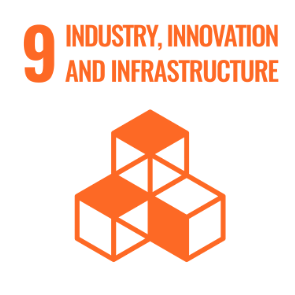ASSIMILATE
Seismic vulnerability and risk assessment are essential steps to better understand, and eventually mitigate, the impact from earthquakes. Prior to the occurrence of destructive earthquakes, risk assessment can support decision makers in the development of retrofitting interventions, or in seeking insurance coverage. An inaccurate assessment of the risk might lead to an overestimation of the level of safety, discouraging houseowners to take measures to reduce their risk. After the occurrence of an earthquake, it is critical to rapidly assess the potential impact and distribute the available resources effectively. Emergency rescue reports from past earthquakes indicate that 95% of the successful rescues of people trapped under debris occur within the first 48 hours, which emphasizes the need to rapidly identify areas in need of support. The assessment of earthquake risk and the rapid estimation of damage are challenging tasks affected by large uncertainties. It is thus important to explore new technologies and tools to improve the process of assessing the seismic safety of buildings before and after the occurrence of destructive events. Recently developed low-cost sensors to measure vibrations and open-source artificial intelligence tools have the potential to revolutionize the manner in which earthquake damage and risk is assessed. These devices have the capability to transfer data in real-time, and measure ambient vibrations at the top of buildings or ground motion at the foundation. These vibrations can be used to calibrate vulnerability models or to estimate the expected damage after the occurrence of destructive events. Despite the usefulness of such technology, there are still challenges in its employment, which currently prevents its effective application. While the measurement of the dynamic properties of a single building to calibrate a numerical model is commonly performed, their integration on vulnerability modelling for building portfolios has not been explored. Consequently, monitoring data is rarely used for the calibration of vulnerability functions for large building portfolios, thus hampering their exploitation in risk modelling, which could improve considerably the quality of loss models. On the post-event side, data regarding the structural response of buildings is not used on an operational basis, and seismic networks are sparse and limited to a few stations per urban centre. For example, mainland Portugal has less than 50 recording stations in its territory, which prevents the accurate estimation of ground shaking in the populated areas. The reasons for the inability to integrate monitoring data in portfolio risk analyses or to accurately estimate structural damage are due to the high costs involved in the instalment and maintenance of sensors, as well as lack of knowledge regarding the integration of large complex datasets (big data) in vulnerability and loss assessment. The former issue is now being overcome with the availability of low-cost sensors, while the latter challenge is being revolutionized by artificial intelligence (and in particular machine learning) technology that can process large amounts of data to predict complex outcomes. Some of the open-source tools allow researchers to integrate machine learning into their computational frameworks. In vulnerability modelling and damage assessment, machine learning enables the incorporation of a wide range of data regarding the dynamic properties of structures to better calibrate numerical models, as well as the exploration of a multitude of structural response and ground motion parameters to better estimate shaking and damage in near-real time. This project will combine low-cost devices with machine learning technology to develop a platform for vulnerability and damage assessment. To this end, a large number of buildings will be monitored, and the recorded data will be used to develop a framework to calibrate numerical models relying on machine learning technology. Moreover, data recorded from past events will be explored to expand the framework to the estimation of damage and losses using monitoring data captured in near-real time. The consortium involves partners with decades of experience in seismic monitoring, vulnerability modelling and processing of large datasets using machine learning. Such an approach will mitigate several limitations in the current practice regarding vulnerability assessment and rapid loss estimation. This project has several stakeholders such as the Portuguese Civil Protection Authority, the Portuguese Institute of the Sea and Atmosphere (which monitors seismic activity), the National Laboratory of Civil Engineering, the Global Earthquake Model Foundation and SafeHub. It also contributes to the goals of the international agendas of the Sendai Framework and the United Nations 17 Sustainable Development Goals, which ask specifically to better understand risk and reduce the impact of natural hazards.
Referência
PTDC/ECI-EGC/7244/2020Data início
2021 - 03Data de conclusão prevista
2023 - 03Instituição Financiadora
FCT - Fundação para a Ciência e TecnologiaInstituição Proponente
Universidade de AveiroInstituição Prestadora
Faculdade de Engenharia da Universidade do PortoFundação Ensino e Cultura Fernando Pessoa

